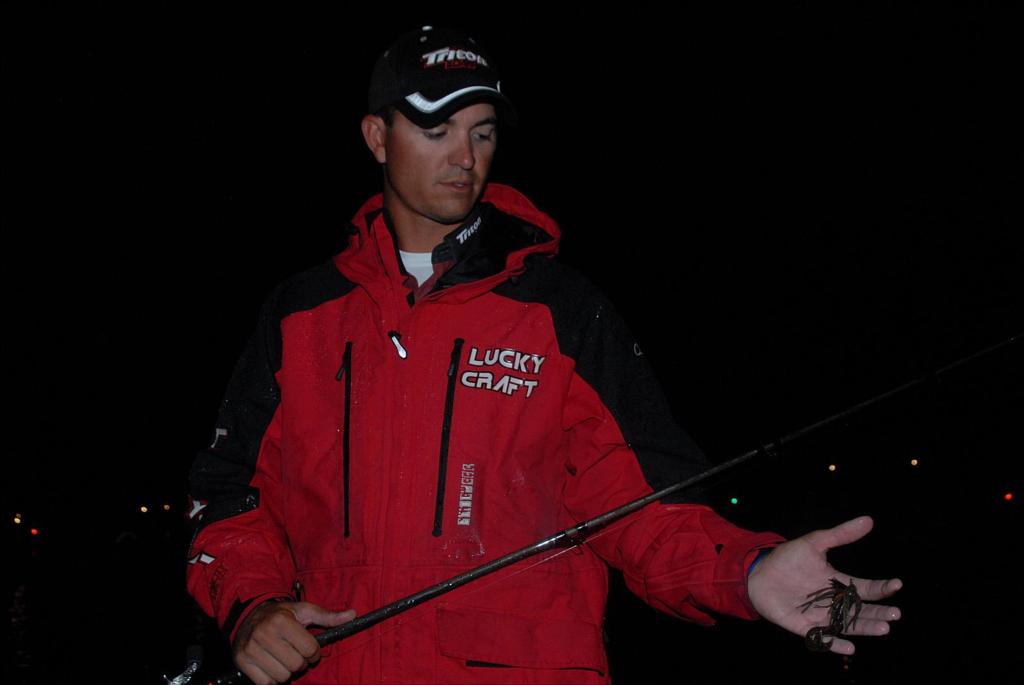Blue-backs, grass and turnovers
Pro Casey Ashley gives his thoughts on late-summer fishing on Clarks Hill

APPLING, Ga. – Watch a few minutes of the weigh-in of the Walmart FLW Series tournament from Clarks Hill, and it’s hard not to notice that some of the fish from this lake are very skinny while others are plump as cantaloupes.
How is it that bass from the same lake can look so drastically different?
Yesterday second-place pro Matthew Wilbanks, who fishes Lake Lanier quite often, rendered his opinion on the matter in his post-weigh-in comments.
Essentially Wilbanks believes that Clarks Hill has two different populations of bass: one being shallow, more grass-oriented fish that feed on threadfin shad and bream; and the other being deeper bass that live far offshore, suspending over deep cover in 20 to 40 feet, feeding on blue-back herring. The shallower grass fish seem to be the skinny ones, while those roaming for blue-blacks are the fat ones.
Pro Casey Ashley of Donalds, S.C., currently in sixth place, agrees with that summation. But Ashley adds that skinny bass are phenomena in the late summer in many lakes across the country.
“This time of year the fall turnover starts to occur, and for some reason that leads to skinny fish, especially here on these Savannah River lakes,” Ashley noted. “Once the lake cools down and the turnover is complete, the fish go back to eating and fatten up for the winter.”
Ashley said the fall turnover – when the upper surface levels of a lake cool down to temperatures lower than the water below and the two layers essentially flip or turn over – is in full effect on Clarks Hill right now.
“You can tell because the water will get a tannic look to it, almost like water in Florida lakes,” Ashley described. “And when you use your trolling motor, it leaves a dust cloud in the water, even though your boat is in 15 feet of water – that bottom sediment that kind of floats to the top and suspends in the water in the upper level. When that’s going on, the whole lake changes and the fish become the skinniest you’ll see all year.”
As for Ashley, his fishing strategy this time of year is to get as far from the main lake and blue-back influence as possible.
“I’m basically fishing for resident fish way back in creeks and tributaries,” Ashley said. “I don’t like trying to keep up with the turnover and blue-backs this time of year, so I just stay away from it. I look for shallow, dirty water where I can pitch a jig. Even the fish I’m catching are skinny, but I think that’s more of a function of the time of year than anything else. For those guys who happen to run across a school of bass on the main lake feeding on blue-backs – yeah, those fish are going to be fatter. But trying to keep up with that bite day to day is pretty dicey. I’d rather take my chances with the shallower, skinnier fish.”
More rain and clouds greeted anglers for the day-three takeoff this morning. Ashley added that he indeed liked the overcast and drizzle much better for his type of fishing.
“I think weather like this helps in picking up an extra straggler or two,” he said. “And an extra straggler or two goes a long way in this tournament.”
The day three weigh-in of the FLW Series BP Eastern event on Clarks Hill will begin Friday at 3 p.m. at Wildwood Park locate at 6212 Holloway Road in Appling.
Friday’s conditions
Sunrise: 7:14 a.m.
Temperature at takeoff: 78 degrees
Expected high temperature: 88 degrees
Water temperature: 82 degrees
Wind: E at 5 to 10 mph
Day’s outlook: 40% chance of rain